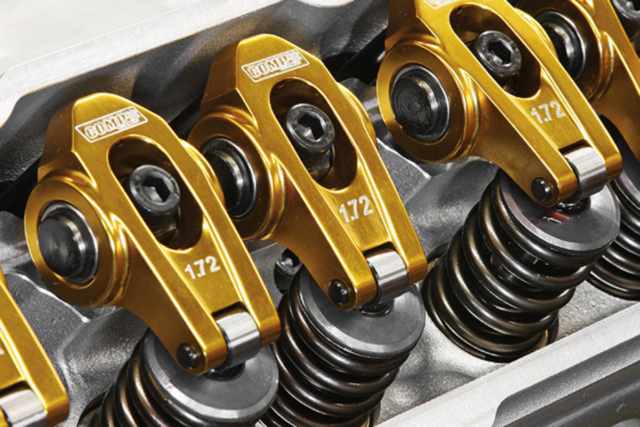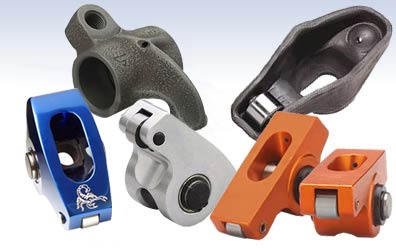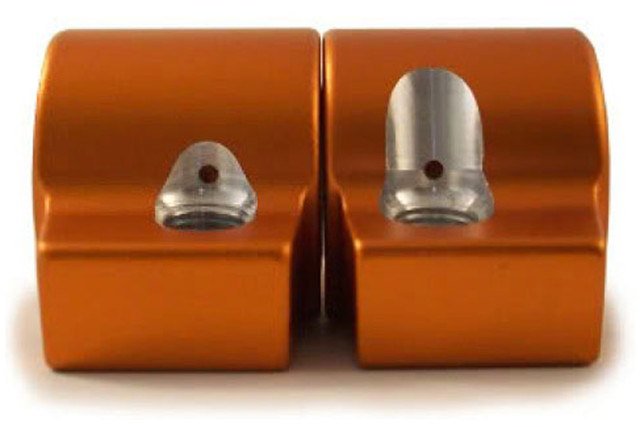We’re sure that most, if not all of you, have heard the term rocker arm ratio mentioned when talking about an engine. But, do you know what rocker-arm ratios are, and how different ratios can affect an engine’s performance?
To start with, an engine is just a sophisticated air pump. The amount 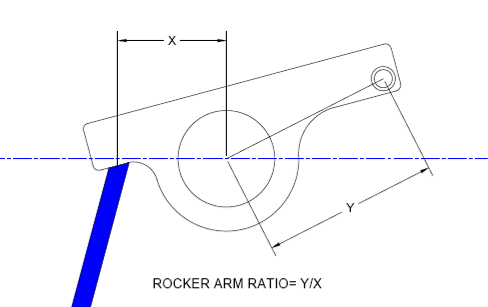 of power this “pump” delivers is directly affected by the amount of air ingested and expelled by the engine. Increase the amount of air flowing through the pump, and you can increase power output. While an engine is running, air is pulled in and pushed out by the moving pistons, but the opening and closing of the intake and exhaust valves is what regulates that air flow. This opening and closing of the valves is controlled by the rocker arms, which are actually driven by the camshaft, usually via a lifter and pushrod. The rocker arm is what we are here to talk about.
of power this “pump” delivers is directly affected by the amount of air ingested and expelled by the engine. Increase the amount of air flowing through the pump, and you can increase power output. While an engine is running, air is pulled in and pushed out by the moving pistons, but the opening and closing of the intake and exhaust valves is what regulates that air flow. This opening and closing of the valves is controlled by the rocker arms, which are actually driven by the camshaft, usually via a lifter and pushrod. The rocker arm is what we are here to talk about.
A rocker arm’s ratio refers to the amount of movement that is transferred to the valve side of the rocker arm in comparison to the pushrod side. For instance, a 1.5:1-ratio rocker arm will move the intake or exhaust valve 1.5 (1 1/2) times the amount of lift delivered by the camshaft. In other words, if your camshaft has a lift of .500-inch, when we multiply that by 1.5, we know that the valve moves .750-inch. When using the same camshaft lift of .500-inch, but now use a set of 1.6:1 rocker arms, you get .800-inch of lift. Essentially, changing to a rocker arm ratio that is larger, is comparable to increasing the lift of your camshaft. Increasing the opening distance of both valves can usually increase power because your engine can move more air.
The rocker arm’s ratio is the measured distance between the contact point at the valve, to the center or pivot point of the rocker arm, divided by the length of the arm from the same center point to the pushrod contact point of the rocker arm. The valve side of a rocker arm is always longer than the pushrod side, and that is how the rocker arm multiplies its motion.
Rocker arm ratios come in varied lengths, but typically range from a ratio of 1.5:1 to 1.8:1. While increasing the rocker arm ratio on an engine is a simple way to mimic the effect of installing a higher-lift camshaft without actually installing a different camshaft, there are some parameters that you need to be aware. One is piston-to-valve clearance. 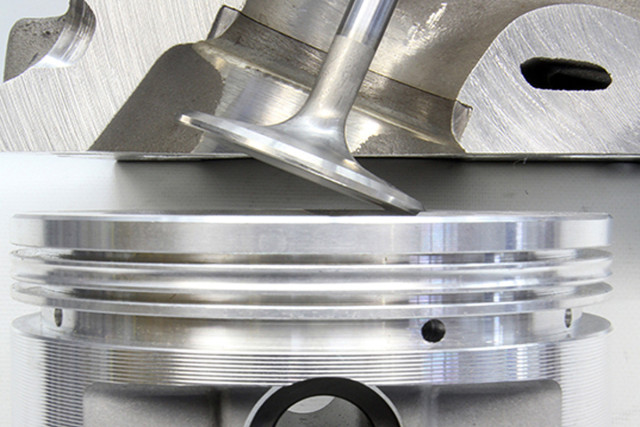 PTV clearance is the measurement of clearance between — you guessed it — the top of the piston, and the valve’s face. Although this distance varies from engine to engine, a typically safe PTV clearance is approximately .050-inch on the intake side, and .090-inch on the exhaust side. Increasing the rocker arm’s ratio can also cause coil bind to occur. Since we know that increasing the rocker arm ratio means increasing valve lift. This increase in valve movement could cause the valve spring coils to contact each other (bind), before the camshaft actually delivers full lift. This increase in valve movement can also result in the valve spring retainer hitting the valve guides.
PTV clearance is the measurement of clearance between — you guessed it — the top of the piston, and the valve’s face. Although this distance varies from engine to engine, a typically safe PTV clearance is approximately .050-inch on the intake side, and .090-inch on the exhaust side. Increasing the rocker arm’s ratio can also cause coil bind to occur. Since we know that increasing the rocker arm ratio means increasing valve lift. This increase in valve movement could cause the valve spring coils to contact each other (bind), before the camshaft actually delivers full lift. This increase in valve movement can also result in the valve spring retainer hitting the valve guides.
If all of these parameters are checked, increasing the rocker arm ratio on an engine can be a beneficial upgrade. Since it increases the distance the valve opens, it can actually improve engine breathing to a degree. Just because the increase in rocker arm ratio causes the valve to open farther, that travel does not necessarily affect the duration of time the valve is open. That being said, the extended time of lift could be characterized as an increase in duration, but that additional time is minuscule. Just increasing lift without increasing the duration of time the valve is open, limits the potential increase of power.
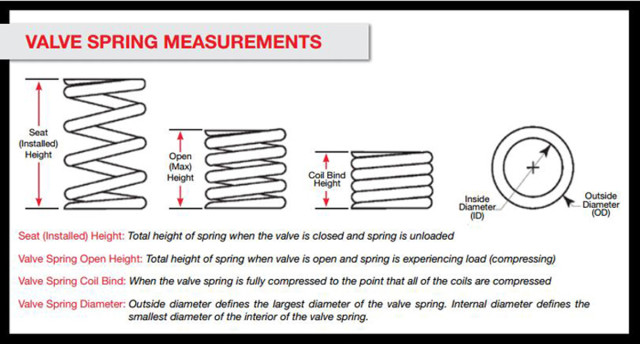
Diagram courtesy of Jegs.
What a lot of mechanics forget to take into consideration when increasing rocker arm ratio, is that the ratio increase will also increase the amount of stress on the valvetrain. as an increase in the rocker arm’s ratio is essentially an increase in leverage. This means that in order to get more valve motion, the camshaft lobe must push harder on the lifter, increasing the contact stress on the camshaft lobes and the lifters themselves.
There is a lot more to selecting rocker arms as an upgrade, but for more in depth information about rocker arm selection, check out these articles about maximizing your cam’s potential, and understanding rocker arms.



